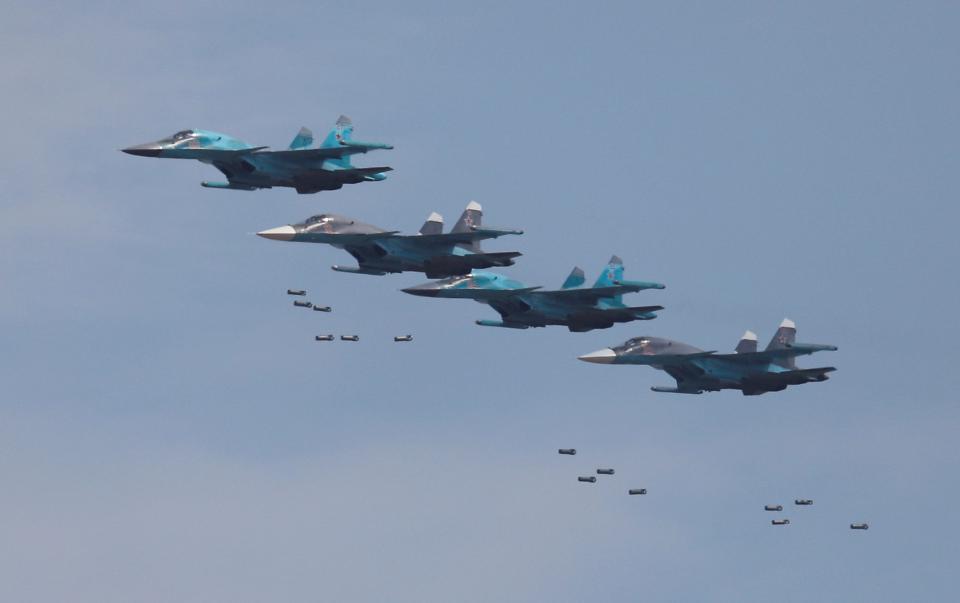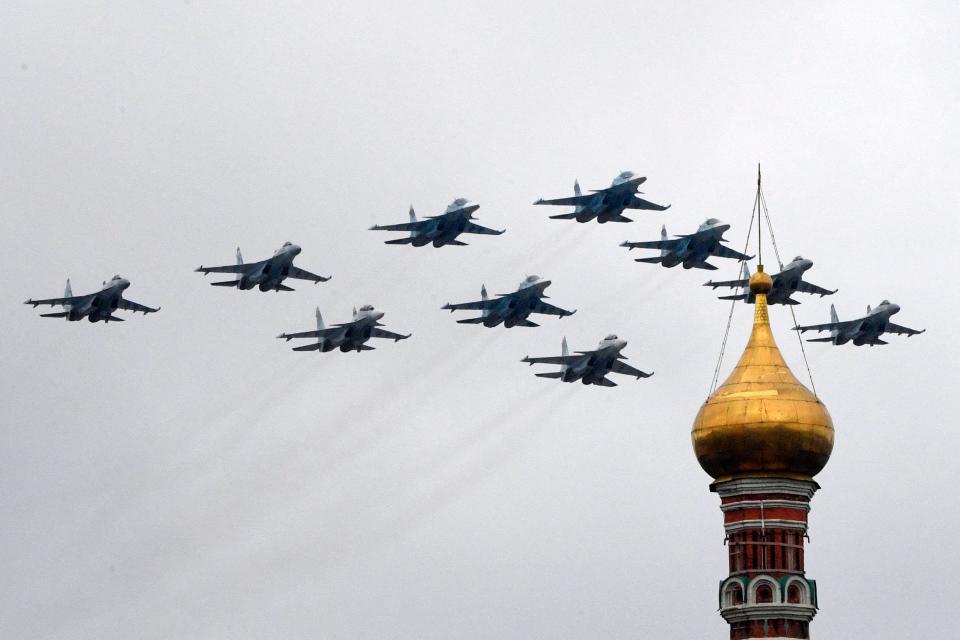-
Ukrainian forces used drones to attack an airfield deep inside Russia last month.
-
Since then, Russia has withdrawn its aircraft from the area and dispersed them to other locations.
-
Western intelligence agencies believe this will place greater strain on Moscow’s aircraft crews.
Russia has pulled dozens of aircraft from the front line in response to a massive Ukrainian drone attack on a military base deep behind enemy lines, according to new Western intelligence reports.
Ukrainian forces fired dozens of attack drones at Kushchevskaya airfield and two oil refineries in southwest Russia on April 27, likely trying to disrupt Moscow’s highly destructive glide bombing operations. The attacks were the latest widespread attacks by Kiev on Moscow’s military and energy facilities.
Britain’s Ministry of Defense said last week’s attack on Kushchevskaya “likely contributed to the removal of around 40 aircraft of various types from the area and dispersed to several airfields further from the front line.”
“The impact is unlikely to be immediately obvious or dramatic. However, “Ukraine has already demonstrated the ability to penetrate much further into Russia than these dispersal sites,” the UK wrote on Friday Intelligence update. However, it was not specified where these new locations were located.

“Enforcing such dispersal measures means that the length of operations must be increased to maintain the same durability across the combat area,” the intelligence update continued. “This will in turn require more fuel, increasing costs while placing greater strain on aircrews.”
Such results would be a victory for Ukraine as it seeks to ease the strain on its frontline forces and air defense network, which has come under increasing pressure in recent months due to a shortage of critical interceptor munitions.
The attack in late April was not the first time that Ukrainian strikes forced Russia to relocate its vulnerable assets. Kiev’s fleet of exploding naval drones has devastated Moscow’s Black Sea Fleet, forcing it to move warships from its headquarters on the occupied Crimean peninsula to a port city on Russia’s southwest coast.
Kushchevskaya airfield is home to the Russian Su-34 and Su-35 fighter aircraft. It was not immediately clear whether aircraft were hit in last weekend’s attack, but Britain’s Ministry of Defense said, citing open-source video footage, that a number of glide bomb kits were destroyed at a warehouse.


Glide bombs have flight control surfaces that allow them to fly toward a target instead of free-falling. They represent a type of standoff weapon, meaning Russian aircraft can fire them from a distance beyond the reach of Ukraine’s air defense systems.
These munitions are difficult to intercept because they have short flight times, low radar signatures, and non-ballistic trajectories. The only way to defeat the threat is to destroy Moscow’s warplanes before they can fire the weapon or to hit them on the ground.
Glide bombs have long been a headache for Ukraine, but Russia is increasingly relying on them this year to attack Kiev’s ground forces at the front and in rear positions with devastating effect. Experts warn that these munitions could play an important role in supporting Moscow’s ground operations in the coming months.
Even before the Kushchevskaya attack, Ukraine tried to attack Russian air bases, apparently to ward off the threat of glide bombs. In April, Kiev launched a large number of drones at the Morozovsk air base, although the extent of the damage was ultimately unclear.
Read the original article on Business Insider
